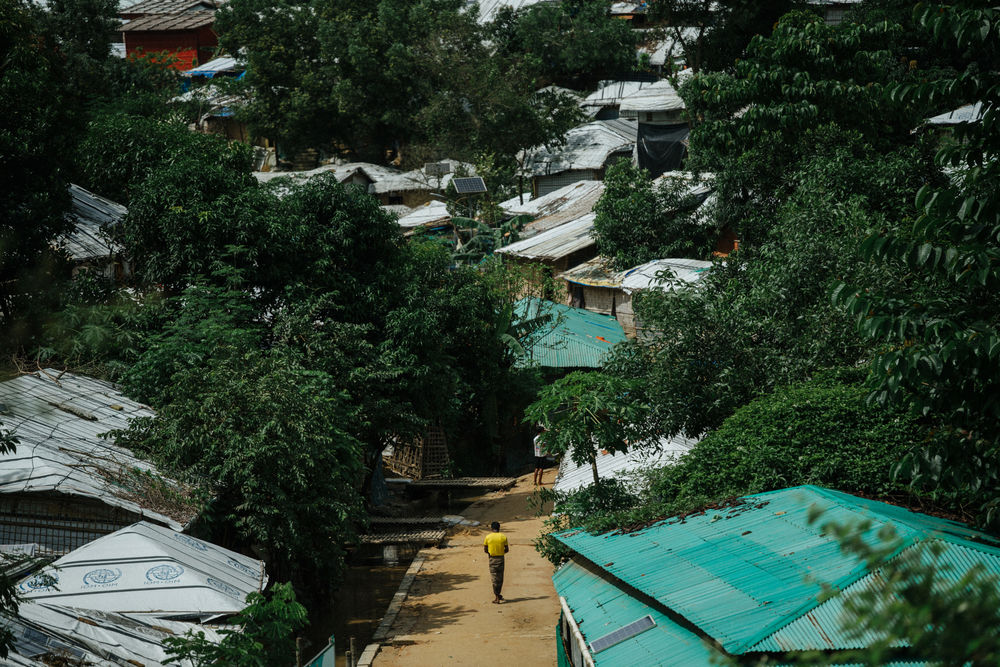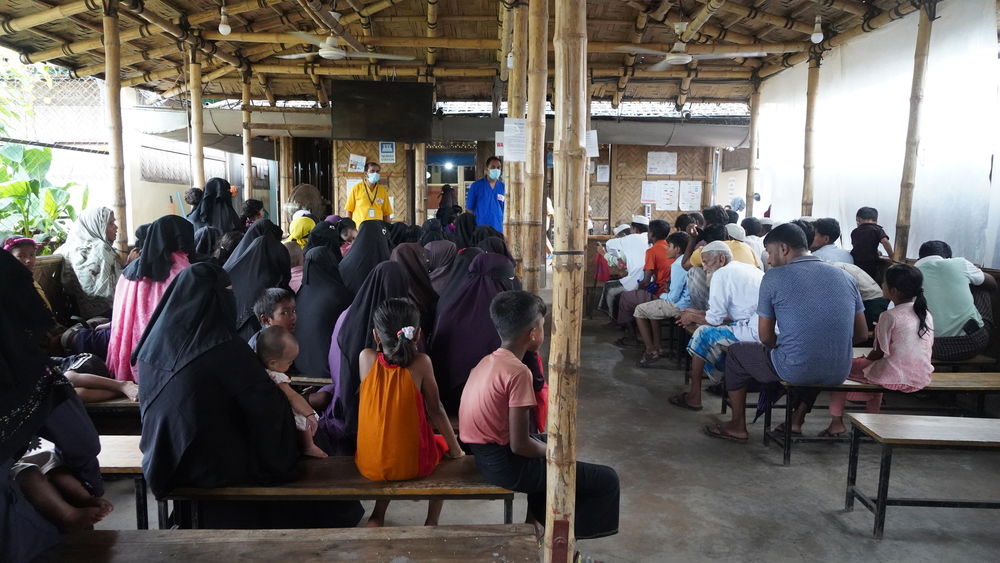In August 2017, the Myanmar military launched a large-scale campaign of violence against the Rohingya population in Rakhine State, forcing over 700,000 people to flee to neighboring Bangladesh. Eight years on, the Rohingya refugee crisis remains unresolved. Bangladesh now hosts approximately 1.3 million Rohingya refugees, with over 1.11 million temporarily sheltering in Cox’s Bazar — making it the world’s largest refugee camp.
After eight years, the Rohingya continue to live without roots, and remain in limbo. They are almost completely dependent on dwindling humanitarian assistance in Bangladesh, including food, and prohibited from formal employment. Generations of children have no recognised education. Meanwhile, the living conditions in the camps are deteriorating, with unexplained fevers, hepatitis C outbreaks, and scarcity of food and water. Most importantly, those in the camps face a future without hope for a life beyond their current confines.
In Rohingya culture, there is a proverb that says: “Water on a taro leaf, blown by the wind, leaves no trace” (Hoñsu Fathar Faaní). “The world is big enough to carry us, but we are treated like water on a taro leaf — never given a place to rest.”, explains Rohingya photojournalist Sahat Zia Hero.
With support from Médecins Sans Frontières (MSF) and other creative partners, Sahat Zia Hero joined nine other Rohingya artists and ten children to develop a series of art projects themed around the taro leaf — a symbol of Rohingya resilience. Through various creative forms, they told stories of survival and identity. Among these, Sahat collaborated with MSF photographer Victor Caringal to produce a photo series capturing daily life in the vast refugee camps of Cox’s Bazar. Together, they hope these images will preserve Rohingya identity, culture, and history — leaving a mark of their existence.
MSF sees the Rohingya not merely as recipients of aid, but as individuals striving for a future — whether through a dignified return to Myanmar or resettlement with safety and rights. The Rohingya community aspires to live with autonomy and dignity, and they are active partners in MSF’s work on the ground. Through art, they continue to preserve their identity, reclaim strength, and leave a lasting mark — like water on a taro leaf that refuses to disappear.
In 2017, large forest areas were cleared to make way for shelters as more than 700,000 Rohingya fled violence in Myanmar and sought refuge in neighbouring Bangladesh. The foliage has now regrown, providing much needed shade in the heat of the densely populated camps, but it also marks eight years of separation from their homeland that the Rohingya have faced.
We picked this image to show the densely packed setting of the camp shelters. The camps are overwhelmingly large, but at the same time, enclosed, restricted and overbearing. Zia notes that the beautiful greenery and regrowth is in stark contrast to the poor conditions of the temporary shelters that Rohingya live in.
This image reminded us of conversations we had about Rohingya unable to leave their mark or legacy in the world. The woman walks through the camp with traceless steps, battered by rain. The rain is suspended, like how Rohingya feel about their situation, like their lives are on pause.
We spotted this man repairing his shelter while walking through the narrow streets of the camps. He appeared impressively strong, carrying out repairs to the temporary bamboo shelter that protects his family during monsoonal storms. It’s a type of strength and resilience that’s easy to photograph, but what this man represented for me, is how I see all Rohingya – a people who have to be strong to survive, to carry more emotional weight than anyone should ever have to carry.
Since late 2023, escalating violence in Myanmar’s Rakhine State has led to more Rohingya seeking safety in Bangladesh. With little remaining space in the densely populated camps, these Rohingya built their shelter on an area of land prone to landslides. Their new home is far smaller than the one they left behind.
With recent aid cuts in the camps,have left learning centres have closed and with contracts terminated for 1179 local teachers within the camps. Education is seen in the camps as is one of the few opportunities for Rohingya youth have to improve their situation.
We chose this image because it showed the fragility and hope of young Rohingya and how decisions made today will have a ripple effect on future generations to share the very real effects aid cuts have on Rohingya, both today and as a ripple effect on future generations.
Children’s play and imagination create moments of relief from daily challenges in the camps. Their vision of a better future are not only expressions of hope but also a way to manage and process the difficult realities around them.
While we walked through the camps, we saw that children were everywhere – laughing, playing, and sometimes being scolded. They brought life to the camps and pockets of joy. Zia noted that the reason there were so many kids was because of the school closures from aid cuts.
We selected this image to share the threat of landslides that occurs from monsoonal rain and flooding, and the eroded soil in the camps. Originally there were shelters built here, but these were lost in a landslide. The area now remains precarious and unoccupied, despite the child standing and smiling from the top of the hill.
I was impressed to see how much food Rayhana was able to prepare within the tight quarters of a shelter kitchen space. Rayhana opened a small food stall in the camps to financially support her family. While there is a food ration in place, it’s currently at US$10 a month per person, which is far below what’s needed to survive in the camps, and the reduction of aid means lower amounts in the future.
We picked this pairing of images as they visually speak to a feeling of enclosure, a sentiment that many Rohingya in the camps talk about while living behind wired fences of the camps.
Farming was an integral part of Rohingya life during Zia’s childhood. In the dense camps where people have no permanent home, land or space, it is rare for people to raise livestock or grow enough vegetables to make a living or survive from.
Zia explained that bamboo was a traditional building material in Rohingya culture. In this picture, the bamboo looks fresh and green, but the quality of this bamboo is lower than what Rohingya would use for their homes and structures in Arakan.
We watched as people crossed the bamboo bridge: two girls taking careful steps, two boys racing to the top, back-flipping into the water. Zia had taken photos of this crossing over the eight years he’d been in the camps. A wider bridge was once in place, but it eroded and was swept away over multiple flood seasons. While it looks precarious, the new bridge provides an important access route between the neighbouring camps.
NGO workers and foreign visitors typically travel to the camps via arterial roads. But deep inside the camps, the throughways become much tighter, and Zia explained that many parts are only accessible on foot. When a medical need arises, people need to be carried to the nearest hospital, a difficult journey which can take hours away in monsoonal conditions.



